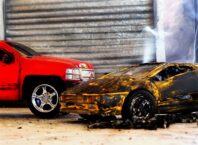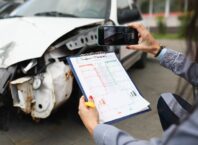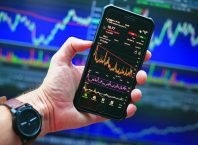There continues to be some interest in wanting to buy Iraqi dinar and the investment possibilities since the onset of the Iraq War. That was since the early part of 2000; close to fourteen years of continued interest in this foreign currency. Much has happened in Iraq and will continue to happen. Investors watch carefully.
Contents
The Iraqi Dinar
The Iraqi dinar or IQD was first introduced in 1932 as a replacement to the Indian Rupee. It had at that time a conversion rate of one dinar to 11 rupees. As India was still a British colony, the dinar was pegged to the British pound until 1959 when the dinar currency moved its basis to the U.S. dollar. The exchange rate stayed on with consistency until the 1990 Gulf War.
After the first Gulf War, the IQD was worth US$3. In the interim, before the second Gulf War, the value of the dinar went up by five to six percent in the black market above the market rate in the foreign exchange. IQD was then known as the Swiss dinar.
After the fall of Saddam Hussein, a new currency was issued with counterfeit protection features. This new dinar had an exchange rate of 150 over 1 of the old. Today, the IQD is still pegged to the U.S. dollar with an exchange rate of about 1:1,180. Historically, it had reached a high of 1,680 with a record low of 1,085.
Currency Confusion
Towards the end of the first Iraq War, there were talks of a lucrative investment opportunity arising from the news of an imminent currency revaluation.
Currency revaluation happens when a country makes an adjusted valuation of its currency relative to its baseline which in Iraq’s case is the U.S. Dollar. This is not a currency appreciation as the value has not changed, just its adjusted value relative to the baseline. However, Iraq revaluation never happened and no plans of revaluation have been made. What actually happened were instances of redenomination.
Redenomination happens when there is a change in local value notes from the old to the new to keep purchasing simple but the value is the same. In Iraq’s case, 1,000 old dinars became an equivalent to 1 new dinar having the same purchasing value.
Hopes For Currency Appreciation From Economic Development
The idea of investing in the IQD boils down to the expectation of economic growth in Iraq, now that the ISIS scourge is expunged and the country can now get back to rebuilding and growing its economy.
IQD investors hope to see an appreciation of the currency with the eventual growth of the Iraqi economy.
There are some that think that Iraq doesn’t want to see its IQD appreciate. They think that doing so will make it harder for Iraq to rebuild and attract foreign investors. Appreciating its currency will make it harder for the country to fulfill its debt obligations due to changing valuations. It also becomes a hindrance to welcoming foreign companies to do business in Iraq. Time will tell how good of an investment the dinar will be.
Iraq will benefit from its 147.22 billion barrels of crude oil based on its production in 2017. This will bring in much-needed funds for its rebuilding and development.
For those who are sourcing for IQD to trade or invest, just do your homework before you invest. To make sure you keep up with the latest news regarding the Iraqi dinar, you might want to look for information from the Central Bank of Iraq. Here you will find the information you need to make an informed decision. You can find an Iraqi currency chart to help you make good investment decisions and know if it is right for your portfolio.
Buying the dinar could be an “invest and forget” type of strategy. You may need to hold onto it for a while. You need to plan for the long-term. The country will get back on its feet eventually. As for investing in IQD, it may be a good time to buy—but have a little patience.












